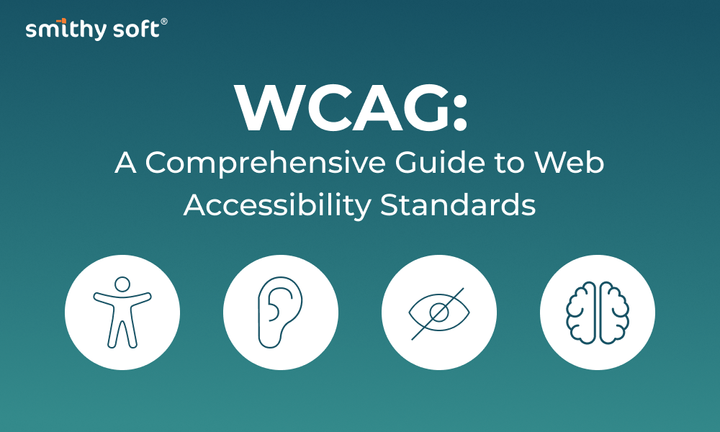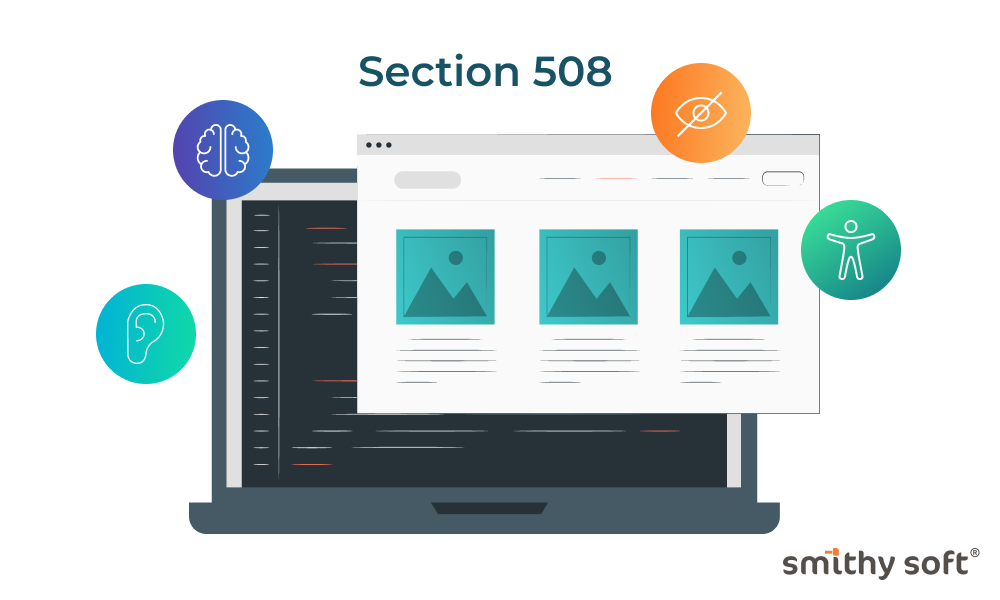10 Metrics that matter

Product metrics are qualitative and quantitative indicators based on which a conclusion can be drawn about the success of a product. A well-chosen set of metrics, accurate analytics, and timely optimization measures help keep your business afloat. However, different businesses have different metrics. Moreover, even within the same niche or the same product typology, they can differ.
Today we will try to figure out how to choose metrics for e-commerce, mobile applications, SaaS, as well as what to look for regardless of the product you create.
The content of the article:
- General metrics
- E-commerce
- Mobile applications
- SaaS
“Metrics are a tool for monitoring and analyzing product development and sustainability. They don’t matter alone, without context. Each metric must be actionable, that is, show how we can improve the product based on it. The better you know your product or service, the more accurate set of metrics you can choose.
Many businesses start on the wrong side. They measure DAU, MAU, and other simple metrics and try to do something with them. The challenge is to turn the pyramid around and start with the sustainability of the product, that is, its ability to exist, develop, and grow.” Alexander Emelyanov, CPO Bioniq
Metrics that matter to everyone
1. Customer Acquisition Cost (CAC). Shows how much the business can attract one user who will use the product.
Aspiring entrepreneurs sometimes think that it is enough to make a product and the business will take off. Users need to be bought over, that is, you have to advertise your product or service to them. At this moment, CAC arises when, within the budget, you need to maximize the number of attracted users.
- How to calculate: CAC = the amount of spent advertising budget to attract new customers / the number of customers attracted.
2. Retention rate. The metric shows how many users continue to use the product after a certain period, and directly affects the customer lifetime value (LTV).
- How to calculate: Retention rate = the number of active users at the end of the period / number of active users at the beginning of the period * 100%.
Example: Let’s say out of 1000 users that the company attracted, 500 were active on the first day, and 200 on the seventh day. To find the seventh-day retention rate, divide 200 by 500 and multiply the result by 100%. The retention rate will be 40%.
3. Churn rate. A metric inverse to retention rate, which shows customer churn.
Usually, the churn rate curve is steep in the first month and flattens out by 4-5 months. This moment is called the plateau retention rate. In the first months, users who did not see value in the product or subscribed by mistake are the most likely to unsubscribe. After that, the business works with those clients that it could retain. The task of the company is to earn enough money on them so that they can recoup CAC 100% of their users.
To lower the churn rate, businesses need to provide the best possible user experience to their customers.
- How to calculate: Churn rate = (1 - number of users at the end of the period / number of users at the beginning of the period) * 100%.
Example: If you had 100 paying users in March and 70 in April, this means that the monthly churn rate was 30%.
4. Lifetime Value (LTV). Shows the profit that the client brings for the entire time of using the product.
The metric makes it possible to analyze the effectiveness of investments. CAC must always be lower than LTV, otherwise, the business will be wasting money and will not survive. For example, if a company brings a user for $100, the use must return at least the same amount, excluding all operating costs and the cost of the product itself.
- How to calculate: The calculation methodology can vary depending on the business model. For example, for an online store LTV = average bill * frequency of repeat purchases * customer lifetime. For a subscription business, you can use a simple formula: LTV = average revenue per customer per month / churn rate.
Example: Let’s say in March a business bought 1000 users with a 10% conversion to a paying subscriber, that is, it received a group of March payers of 100 people. Suppose the monthly churn rate of this group is 30% without plateauing.
Having built the retention graph, you can see that by next March 1% of the paying users of this group will remain. Multiplying the monthly withholding of paying users by the payment amount and dividing by 100 (input group), we get an average LTV of $330.
5. Net Promoter Score (NPS) — consumer loyalty index. Shows how willing your customers are to share their product experiences.
A user with average expectations, having received a good impression, will definitely share their opinion on social media or in-person with friends and, as a result, will bring new customers. If, for example, each paid user brings another free user, the CAC is halved.
The NPS is correlated with the Customer’s Referral Value (CRV) metric — the amount of money earned through referrals.
- How to calculate: Let users tell you how likely they are to recommend your product on a scale of 0 to 10, where 0 is not likely and 10 is sure to recommend. The responses will identify three groups of customers: critics (0-6), neutrals (7-8), and promoters (9-10). NPS = total number of promoters (%) – total number of critics (%). NPS over 50% is considered a good result.
6. Daily Active Users and Monthly Active User — the number of unique users who use the product, per day and month, excluding repeated sessions.
It makes sense to rely on these metrics only in a general context. For example, if a business operates on a subscription model, it is important that users pay for the subscription rather than just logging into the product. However, if a user does not use a product, they do not receive its value and will eventually leave.
7. Session duration is a metric that shows how much time the user has spent using the product.
Makes sense only in the context of a specific business. For example, for Netflix, session time is important: the more a user watches content, the higher the subscription value. Uber’s goal, on the other hand, is to reduce session times.
“It is very important to understand how the metrics correlate with each other. For example, dating products have a profile quality – completeness of a profile. The more photos and information users put in the profile, the more successful they will be on the platform (more views, likes, matches, dates). Therefore, it is necessary to make sure that they fill out the profile with high quality on the first day. However, a user often wants to be active now. It’s easier for them to put one photo and start swiping. It would seem that the metric of momentary activity is increasing. But if you look strategically, it is the profile quality that correlates with the retention rate.” Alexander Emelyanov, CPO Bioniq
E-commerce
“In e-commerce, you can come up with many metrics: visits, browsing depth, time on site, percentage of users who add items to cart, and so on. But a set of key ones is compiled depending on the strategy and goals of a particular business. In any case, the main metric for most products will be the amount of money it brings.” Natalia Baldygina, product owner of KUPIVIP
1. Visits — the number of sessions on the site.
While any business wants its visit rate to grow, it alone is unlikely to help guide product decisions. The goal of the business is to increase Visits to sale conversion - the percentage of visitors who made a purchase, that is, the ratio of orders to visits.
2. Orders — the number of orders for a certain period, and Average order value - the average monetary value of one order, ‘average bill’.
Both metrics directly affect the company’s profitability. Metrics can be influenced by product enhancements. These can be both promotional activities and upsells at any step of the user journey.
- How to calculate: AOV = order revenue / order quantity.
3. Conversion Rate — is a central metric for e-commerce. Shows the proportion of visits to the site that ended with targeted action, that is, a purchase.
Conversions differ depending on the line of business: for example, for the fashion e-commerce vertical in the non-promotional period, CR of 1% or more is considered normal. During periods of active price discount sales, this indicator can increase several times – up to 2-3% and more.
- How to calculate: CR = number of visitors who performed the target action / total number of visitors * 100%.
4. Repeat customers — the percentage of visitors who became repeat customers, that is, made more than one purchase.
It’s important to make sure customers come back and become loyal. Firstly, it pays for CAC, and secondly, such users are more loyal to the service and can, out of habit, open your application or website in the subway, at home, at work, which can lead to a purchase.
- How to calculate: RС = number of customers who made more than one order / number of all customers.
5. Shopping cart abandonment — the number of users who added a product to the cart, but did not proceed with the order.
Helps to optimize the customer journey. It is important to keep in mind that people can use the shopping cart instead of their favorites, so if a user has added several products to it, but does not buy them yet, this does not mean that they are having UX difficulties. Perhaps they are waiting for discounts or a salary.
6. Checkout abandonment rate — the number of users who filled in the cart, reached the checkout but did not complete the purchase.
You should pay special attention to this metric if the company makes changes to the checkout. Perhaps something in the ordering process is not clear to the user, because of which they do not reach the end. After refining the product, it is necessary to measure whether this helped to reduce the checkout abandonment rate or not.
Mobile applications
“The success of a mobile application is made up of many factors that, fortunately, can be calculated and predicted. For this, there are a large number of metrics and indicators that are important to monitor to quickly respond to negative signals or, conversely, to consolidate a positive result. Also, in an increasingly competitive environment, you need to understand what exactly attracts customers to your application and how it can be improved.” Vladimir Shabason, co-founder of the digital bureau Self
1. Downloads — the number of the application downloads.
Statistics on downloads can be viewed in the stores. If the indicator is unsatisfactory or the number of downloads is decreasing, this is a signal to reconsider the marketing campaign, and if you hadn’t one, consider this option to try and optimize the application pages in Google Play and the App Store. At the same time, the number of downloads is not the end of analysis, it is much more important to pay attention to the number of users who brought income to the business. 1000 quality customers are much better than a million who downloaded the app and uninstalled it right away.
2. Activations rate — the percentage of users who launched the application after installing it.
The indicator can be used effectively for A/B testing: it will allow you to quickly collect feedback and make adjustments to the application. Reports for this metric are also available through Google Play and the App Store.
- How to calculate: Activations rate = number of activations / number of downloads * 100%.
3. Sticky Factor — a metric that determines how often people return to the application.
The lower the indicator, the fewer users of the application are ‘sticking’ to it, and vice versa. Sticky Factor helps to assess the users’ loyalty, and loyal users make payments more often than others.
There are average norms for the indicator depending on the type of application: for example, for social networks, it is 50%, for games - 10-18%, for the rest - 20%. If the indicator is below 5%, it is worth taking action: for example, launching push notifications or adding new features to the application.
- How to calculate: Sticky Factor = MAU / DAU * 100%
4. Uninstalls — the number of users who installed the application, but for some reason did not register in it and do not use it.
The lower the number, the larger your audience. The metric is important primarily for identifying factors that hinder users. Possible reasons for the growth of the Uninstalls Rate:
- The user did not like the application — in this case, it is important to form expectations correctly, for example, not to indicate functions that are not featured in the application.
- The application is no longer needed — it often concerns applications that close a one-time task. For example, a tourist traveled to another country, downloaded a local navigator, used it, and deleted it upon returning home. In this case, the decrease in Uninstalls Rate is normal.
- Personal motives and circumstances — for example, the user is running out of memory on the device.
- Bugs — technical problems when starting a new application.
- Complicated registration procedure. The most obvious solution is to simplify the process, add tips or instructions.
5. Conversion Rate Install to Event — conversion from installations to action (varies depending on the application).
Why it is important: CR from installation to the event shows how relevant the service or product is and is it in demand. Also, this metric reflects the efficiency of purchasing through different channels: by its example, you can compare the effectiveness of organic and paid acquisition.
“At ABBYY, we operate CR inside a mobile application: we look at the percentage of users who added the first document and how many of them subscribed. For example, if we had 1000 installs and 100 added documents from unique users, the CR for adding a document would be 10%. Using this logic, you can build a marketing funnel and roughly understand at what stage a part of the audience ‘falls off’ and what the problem may be: with the product or with the attraction.
Marketplace and pricing work in a similar way in applications from other areas, for example, taxi, car sharing. The more users opened the application and the fewer then ordered the service, the lower the coefficient and price will be in the future. And exactly the opposite: the higher the CR from the displayed price to the placed order, the more expensive the service will cost.” Yuriy Tsoi, mobile marketing manager, ABBYY
SaaS
“SaaS has its peculiarities of accounting metrics. Monetary metrics are counted slightly differently than other products. This is because the client can pay immediately for a long period, or he can pay a little every month. This can be taken into account through the MRR (Monthly Recurring Revenue) metric.
If a customer pays for long periods, you may need your activity metrics that are not directly related to money. By looking at them, you can predict activations and churns and use them for experimenting.
The classic retention rate and churn rate are calculated by visits or payments, but you can measure the retention and churn of any action: completing a task, creating a note, sending a message. The main thing is to identify the key activities for your service, which correlate with the total revenue and the client’s lifespan.” Alexander Sorokin, product director at Megaplan
“I want to dispel the illusions right away: there is no universal set of metrics that suits all SaaS products. Each has its own unique set that can be defined based on the HEART or PULSE frameworks. Of course, it can include metrics that are tracked in other products (APRU, MAU, and others), but their importance for SaaS is a big question. But it will not be superfluous to talk about the ‘basic set’ of metrics.” Ivan Marakhovka, founder of WEEEK
Monetary metrics
1. Average Revenue Per User (ARPU) — revenue per active user. It is used to assess changes in the project and compare products with each other - the investor is more likely to choose the one with the higher ARPU.
- How to calculate: ARPU = Revenue / Active Users.
2. Average Revenue Per Paying User (ARPPU) — revenue per paying user. Although this metric differs from ARPU by only one letter, the difference is fundamental. Here, the calculation includes not just active users but paying users for a certain period. ARPPU shows how much a loyal customer is willing to pay for using the product.
- How to calculate: ARPPU = Revenue / Paying Users.
Note: formally, ARPPU is not tied to subscription duration. For example, if an account pays for two years, this month’s ARPPU will accommodate the entire fee. Because of this, in case of SaaS, the metric for the monthly conversion is sometimes called ARPA (Average Revenue per Account per month).
3. Monthly Recurring Revenue (MRR) is the regular monthly income or amount that customers pay for a month of use. One of the most important metrics for monthly subscription products. It helps not only to understand how well the company is growing but also to predict future revenues.
- How to calculate: MRR = Number of clients * Average income per client per month.
MRR subtypes:
- New MRR — income that comes from new subscriptions;
- Expansion MRR — income that comes from the increasing of tariff;
- Contraction MRR — losses from tariff reductions;
- Churn MRR — churn losses;
- Reactivation MRR — income from reactivated subscriptions.
New Net MRR shows the growth rate of the SaaS subscription base and does not take into account those who renew under the same conditions as before.
- How to calculate: Net New MRR = New MRR + Expansion MRR + Reactivation MRR — Contraction MRR — Churn MRR.
4. Annual Recurring Revenue (ARR) — similar to MRR, ARR is the regular annual income. Relevant for companies that focus on an annual subscription.
- How to calculate: ARR = MRR × 12
Onboarding metrics
5. Leads — the number of users who showed interest in the product and shared their contact details; and Unique visitors to leads – the percentage of visitors who became leads. Relative metrics that identify the most efficient traffic channels.
- How to calculate: the number of registrations on the site for the period / the number of unique site visitors for the period.
6. Unique visitors to subscription — the percentage of visitors who bought a subscription. The metric allows you to identify the most converting traffic channels.
- How to calculate: the number of users who bought a subscription for the period / the number of unique site visitors for the period.
You can check this metric in the context of different traffic sources.
7. Leads to subscription — the percentage of users who activated a paid subscription after the trial period or after sharing their contact info. This metric is influenced by many factors and different teams within the company. For example, a product team strives to improve it by adding useful features to the product and delivering value to users.
- How to calculate: to compare the results of different periods, you can calculate the number of those who converted in a limited period.
Leads to subscription = number of customers who paid in the first N days after registration / number of customers who started using the product or shared their data.
Engagement metrics
9. Actions per month — the number of actions concerning the product per month (per week, per day). The steps will vary depending on the functionality of the product. The metric will allow you to determine the level of user engagement, highlight a loyal customer or identify technical problems.
10. Active users — the number of customers who actively use the product. The business decides on its own what ‘active’ means in its case. The metric will also help measure user engagement, build mechanisms to increase its level, and prevent subscriptions.
There are actually many more metrics out there, both useful for your particular product and those that will work for someone else. In this case, the main thing is not to dwell on 2-3 metrics that are suitable for everyone, or which are most often mentioned and popularized in social media, but through analysis and experiments, choose your own unique set, which makes it possible to objectively assess the state of affairs and make the necessary decisions. In the future, we will return to this topic, touching upon other types of software products.


